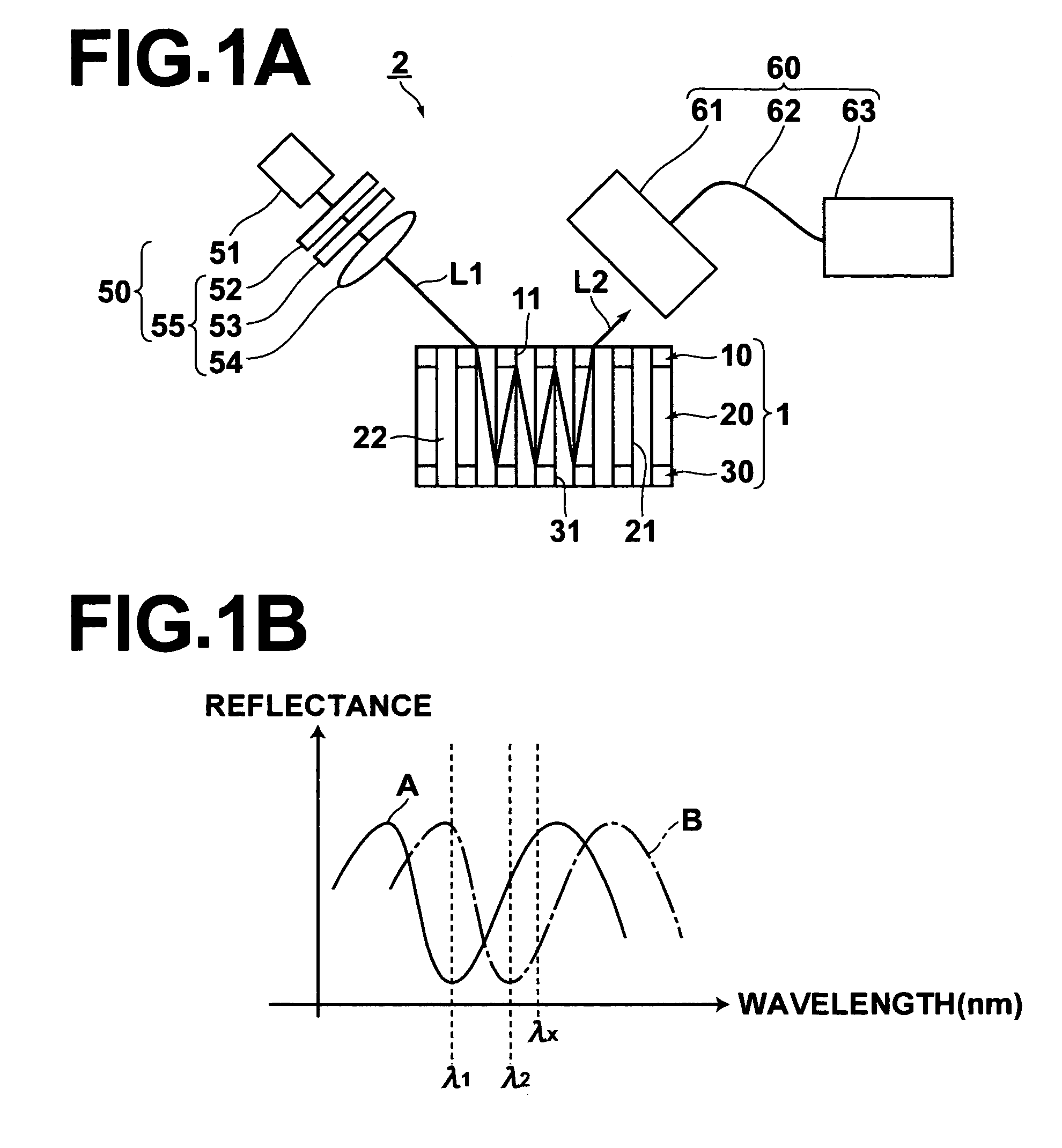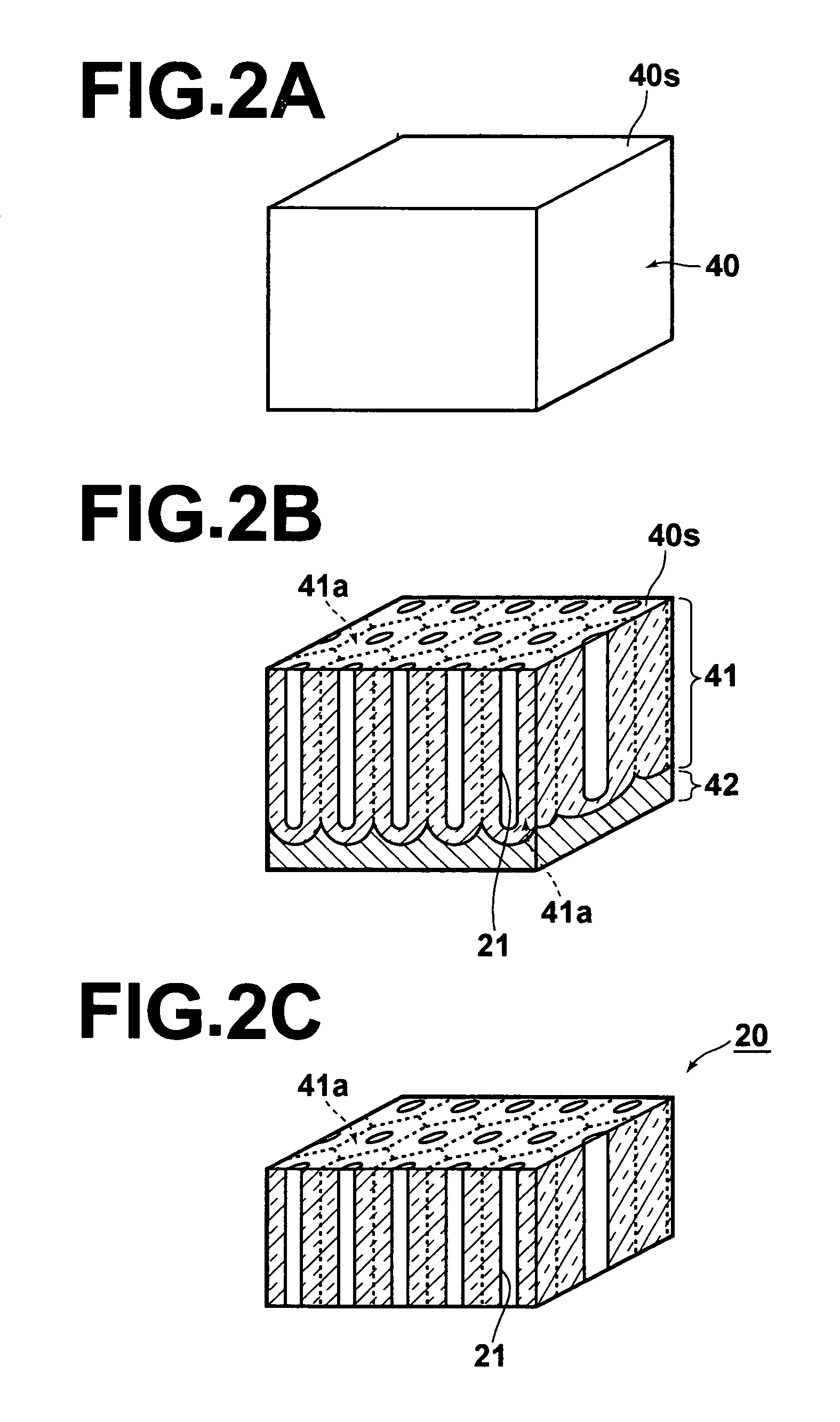Fluid analysis element and fluid analysis apparatus
a technology of fluid analysis and element, which is applied in the direction of measurement devices, phase-affecting property measurements, instruments, etc., can solve the problems of preventing flexibility in design changes to optical systems, difficult to manufacture conventional interference filters having large areas, etc., to achieve high accuracy the effect of fluid sample analysis, easy manufacturing and large area
- Summary
- Abstract
- Description
- Claims
- Application Information
AI Technical Summary
Benefits of technology
Problems solved by technology
Method used
Image
Examples
first embodiment
[0051]A fluid analysis element 1 according to a first embodiment of the present invention and a fluid analysis apparatus 2 that employs the fluid analysis element will be described with reference to FIGS. 1A through FIG. 2C. FIG. 1A is a schematic view of the entire fluid analysis apparatus 2 of the first embodiment (the fluid analysis element 1 is illustrated in cross section in the thickness direction thereof, with hatching omitted). FIG. 1B is a graph illustrating examples of spectra of reflected light beams. FIGS. 2A through 2C are perspective views that illustrate the manufacturing steps of the fluid analysis element 1.
[0052]As illustrated in FIG. 1A, the fluid analysis apparatus 2 comprises: the fluid analysis element 1 that emits an emitted light beam L2, which has different physical properties depending on the type of fluid sample 22, when a measuring light beam L1 enters thereinto; a measuring light emitting means 50, for irradiating the measuring light beam L1 onto the flu...
second embodiment
[0095]Next, a fluid analysis element 3 according to a second embodiment of the present invention will be described with reference to FIG. 3. The basic structure of the fluid analysis element 3 is the same as that of the fluid analysis element 1 of the first embodiment. Therefore, common structural elements are denoted with the same reference numerals, and detailed descriptions thereof will be omitted. FIG. 3 corresponds to the illustration of the fluid analysis element 1 of FIG. 1A.
[0096]The fluid analysis element 3 of the second embodiment comprises: a first reflector 10; a transmissive apertured member 20; and a second reflector 30; provided in this order from the side of the element 3 into which the measuring light beam L1 enters, similar to the fluid analysis element 1. However the fluid analysis element 3 differs from the fluid analysis element 1 in that fine apertures 21 of the transmissive apertured member 20 do not penetrate therethrough, and that the second reflector 30 is ...
PUM
| Property | Measurement | Unit |
|---|---|---|
| diameters | aaaaa | aaaaa |
| temperature | aaaaa | aaaaa |
| applied voltage | aaaaa | aaaaa |
Abstract
Description
Claims
Application Information
 Login to View More
Login to View More - R&D
- Intellectual Property
- Life Sciences
- Materials
- Tech Scout
- Unparalleled Data Quality
- Higher Quality Content
- 60% Fewer Hallucinations
Browse by: Latest US Patents, China's latest patents, Technical Efficacy Thesaurus, Application Domain, Technology Topic, Popular Technical Reports.
© 2025 PatSnap. All rights reserved.Legal|Privacy policy|Modern Slavery Act Transparency Statement|Sitemap|About US| Contact US: help@patsnap.com



